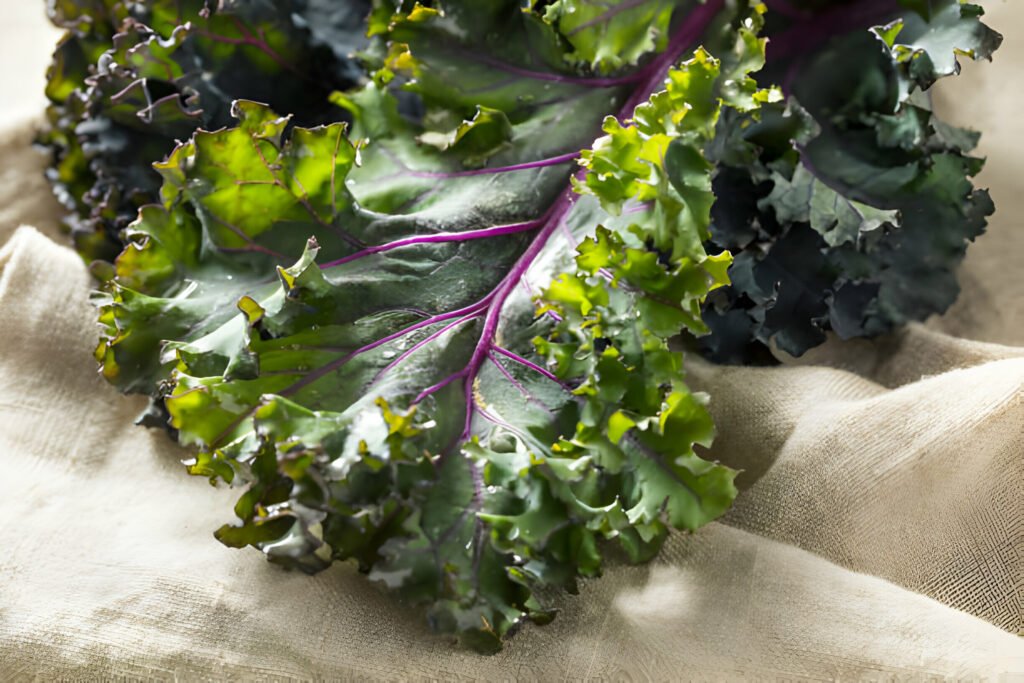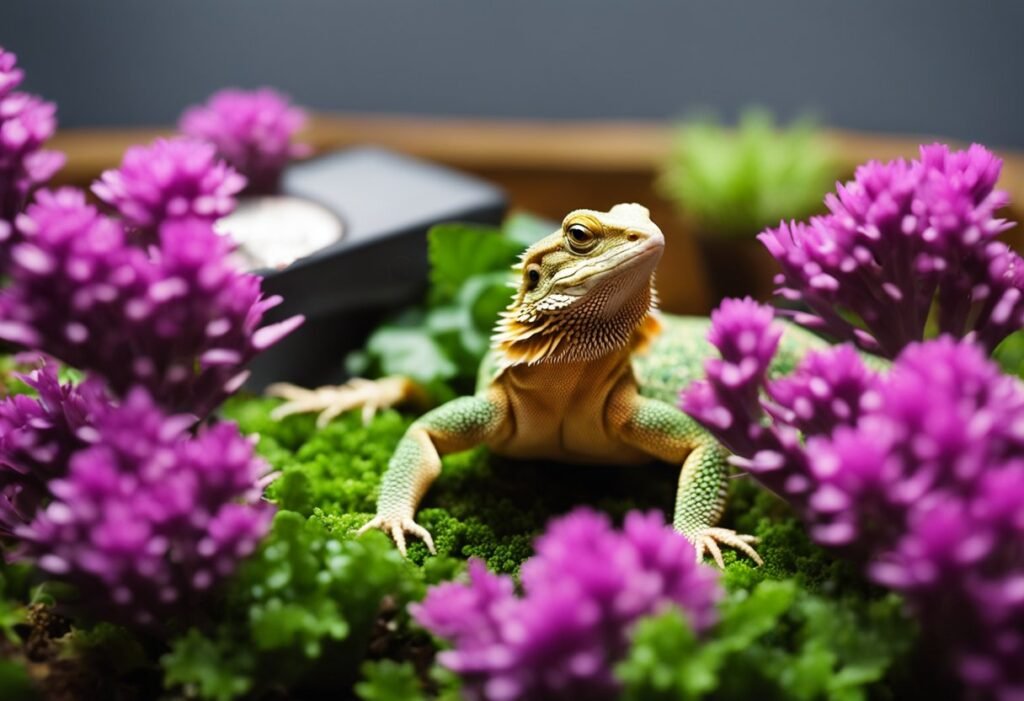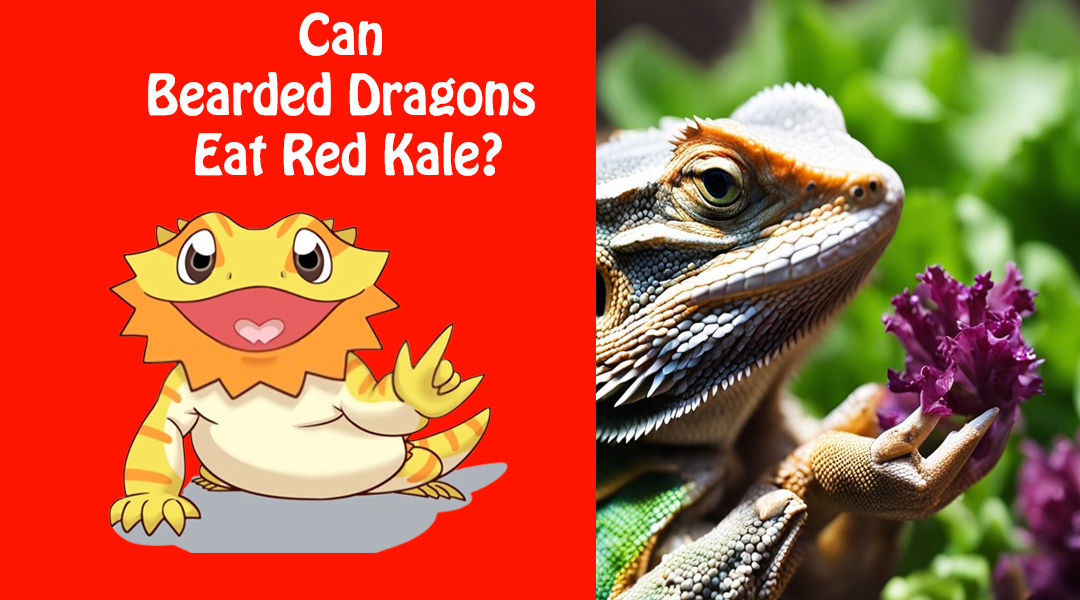Bearded dragons are fascinating creatures that have become increasingly popular as pets. They are known for their docile nature, unique appearance, and ease of care. As with any pet, it’s important to ensure that they are receiving a well-balanced diet to maintain their health and wellbeing. One of the questions that often arises is whether bearded dragons can eat red kale.
Red kale is a leafy vegetable that is a member of the cabbage family. It is a rich source of vitamins and minerals, including vitamins A, C, and K, as well as calcium, iron, and potassium. While it is a nutritious food for humans, it’s important to consider whether it is suitable for bearded dragons as well. In this article, we will explore the question of whether bearded dragons can safely consume red kale, and what factors should be taken into consideration when feeding it to them.
Nutritional Benefits of Red Kale for Bearded Dragons

Red kale is a nutritious leafy green vegetable that can be a great addition to a bearded dragon’s diet. It is packed with essential vitamins and minerals that can help keep your pet healthy and happy.
Here are some of the key nutritional benefits of red kale for bearded dragons:
High in Vitamins A and C
Red kale is a rich source of vitamins A and C, which are both important for maintaining a healthy immune system. Vitamin A is essential for maintaining healthy eyesight and skin, while vitamin C helps to boost the immune system and fight off infections.
Rich in Calcium
Calcium is an essential mineral for bearded dragons, as it helps to maintain strong bones and teeth. Red kale is a good source of calcium, making it an important part of a balanced diet for your pet.
Low in Oxalates
Oxalates are natural compounds found in many leafy greens that can bind to calcium and prevent it from being absorbed by the body. Red kale is relatively low in oxalates compared to other leafy greens, making it a better choice for bearded dragons.
How to Feed Red Kale to Your Bearded Dragon
When feeding red kale to your bearded dragon, it’s important to chop it up into small pieces to make it easier for your pet to eat. You can also mix it with other vegetables to provide a variety of nutrients.
Remember to always wash red kale thoroughly before feeding it to your pet to remove any dirt or pesticides. And as with any new food, introduce red kale slowly to your bearded dragon’s diet to avoid any digestive issues.
Overall, red kale can be a nutritious and tasty addition to your bearded dragon’s diet. Just be sure to feed it in moderation, as too much of any one food can be harmful to your pet’s health.
Feeding Guidelines for Bearded Dragons and Red Kale
Appropriate Serving Size
When feeding red kale to your bearded dragon, it is important to provide an appropriate serving size. A general rule of thumb is to offer a serving size that is no larger than the size of your bearded dragon’s head. This ensures that your bearded dragon can easily consume the kale and prevents the risk of choking.
It is also important to note that red kale should not be the sole source of nutrition for your bearded dragon. It should be offered as part of a balanced diet that includes a variety of vegetables, fruits, and insects.
Frequency of Feeding
Red kale can be fed to your bearded dragon on a regular basis, but it should not be the only vegetable offered. We recommend offering red kale once or twice a week as part of a varied diet.
It is important to monitor your bearded dragon’s response to red kale and adjust the frequency of feeding accordingly. If your bearded dragon experiences any digestive issues or refuses to eat the kale, it may be necessary to reduce the frequency of feeding or remove it from their diet altogether.
Overall, red kale can be a nutritious addition to your bearded dragon’s diet when offered in appropriate serving sizes and frequencies. As with any new food item, it is important to introduce it gradually and monitor your bearded dragon’s response.
Preparing Red Kale for Bearded Dragons
Red kale is a nutritious leafy green that can be a great addition to a bearded dragon’s diet. However, it is important to properly prepare red kale before feeding it to your pet. In this section, we will discuss the steps to take to prepare red kale for your bearded dragon.
Washing and Chopping
Before feeding red kale to your bearded dragon, it is important to wash it thoroughly. Rinse the leaves under running water and gently rub them to remove any dirt or debris. Be sure to remove any damaged or wilted leaves.
Once the red kale is clean, it can be chopped into small pieces. This will make it easier for your bearded dragon to eat and digest. Use a sharp knife or kitchen scissors to chop the red kale into bite-sized pieces.
Raw vs Cooked
Red kale can be fed to bearded dragons both raw and cooked. Raw red kale is a great source of nutrients, but it can be tough for bearded dragons to digest. Cooking red kale can make it easier for your pet to digest and can also help to break down any harmful substances that may be present in the leaves.
If you choose to cook the red kale, it is important to avoid using any oils, seasonings, or other additives. Simply steam the red kale until it is tender and then allow it to cool before serving it to your bearded dragon.
In conclusion, red kale can be a nutritious addition to your bearded dragon’s diet. By properly washing and chopping the leaves and choosing to feed it raw or cooked, you can ensure that your pet is getting the most out of this healthy leafy green.
Potential Risks of Feeding Red Kale to Bearded Dragons
When considering feeding red kale to your bearded dragon, it is important to be aware of the potential risks associated with this leafy green. In this section, we will discuss two important factors to consider before adding red kale to your bearded dragon’s diet.
Oxalates and Goitrogens
Red kale contains high levels of oxalates and goitrogens, which can be harmful to bearded dragons if consumed in large quantities. Oxalates can bind to calcium in the body, leading to the formation of calcium oxalate crystals, which can cause kidney damage and even death in severe cases. Goitrogens can interfere with the thyroid gland’s ability to produce hormones, leading to goiter and other thyroid-related problems.
While small amounts of red kale may not pose a significant risk to your bearded dragon’s health, it is important to monitor their intake and limit the amount of red kale they consume. If you notice any signs of discomfort, such as vomiting or diarrhea, it is best to remove red kale from their diet and consult with a veterinarian.
Calcium to Phosphorus Ratio
Another important factor to consider when feeding red kale to your bearded dragon is the calcium to phosphorus ratio. Bearded dragons require a calcium to phosphorus ratio of 2:1 in their diet to maintain healthy bones and overall health. However, red kale contains a high amount of phosphorus and a low amount of calcium, which can disrupt this balance and lead to health problems.
To ensure that your bearded dragon is receiving the proper calcium to phosphorus ratio, it is recommended to feed them a variety of calcium-rich foods, such as calcium supplements, leafy greens, and insects. Additionally, it is important to limit the amount of high phosphorus foods, such as red kale, in their diet.
In conclusion, while red kale can be a nutritious addition to your bearded dragon’s diet, it is important to be aware of the potential risks associated with its consumption. By monitoring their intake and ensuring a proper calcium to phosphorus ratio, you can help keep your bearded dragon healthy and happy.
Incorporating Red Kale into a Bearded Dragon’s Diet
Red kale is a nutritious vegetable that can be a great addition to a bearded dragon’s diet. However, it is important to introduce it properly and in moderation. Here are some tips on how to incorporate red kale into your bearded dragon’s diet.
Mixing with Other Greens
Red kale can be mixed with other greens to provide a balanced diet for your bearded dragon. Some good greens to mix with red kale include collard greens, mustard greens, and dandelion greens. It is important to vary the greens in your bearded dragon’s diet to ensure they are getting a wide range of nutrients.
To mix red kale with other greens, simply chop them up into small pieces and mix them together. You can also use a food processor to chop the greens into smaller pieces. Be sure to wash the greens thoroughly before feeding them to your bearded dragon.
Transitioning Foods
If you are introducing red kale into your bearded dragon’s diet for the first time, it is important to do so gradually. Start by offering small amounts of red kale mixed with other greens. Over time, you can increase the amount of red kale in their diet.
It is also important to monitor your bearded dragon’s behavior and health when introducing new foods. If they show signs of digestive upset or other health issues, it may be necessary to adjust their diet.
In conclusion, red kale can be a great addition to a bearded dragon’s diet when introduced properly and in moderation. By mixing it with other greens and transitioning foods gradually, you can provide your bearded dragon with a balanced and nutritious diet.
Monitoring Your Bearded Dragon’s Health

As responsible pet owners, we should always keep an eye on our bearded dragon’s health. This includes monitoring their diet, behavior, and physical appearance. Here are some tips on how to ensure your bearded dragon is healthy and happy.
Signs of Good Nutrition
One of the most important aspects of a bearded dragon’s health is their diet. A well-balanced diet should consist of a variety of vegetables, fruits, and insects. When feeding your bearded dragon, make sure to include red kale as part of their vegetable intake.
A bearded dragon that is getting proper nutrition will have a healthy weight, clear eyes, and a shiny coat. They will also be active and alert, and have regular bowel movements.
Warning Signs to Watch For
It’s crucial to be aware of any warning signs that your bearded dragon may be experiencing health problems. Some common warning signs to watch for include:
- Loss of appetite
- Weight loss
- Lethargy
- Diarrhea or constipation
- Abnormal behavior, such as hiding or aggression
- Discharge from the eyes, nose, or mouth
If you notice any of these warning signs, it’s essential to take your bearded dragon to a veterinarian who specializes in reptiles. Early detection and treatment of health problems can help ensure that your bearded dragon lives a long and healthy life.
In conclusion, monitoring your bearded dragon’s health is crucial for their well-being. By providing a balanced diet and being aware of warning signs, we can help ensure that our bearded dragons stay healthy and happy for years to come.
Frequently Asked Questions
Is it safe for bearded dragons to consume kale, including red kale?
Yes, bearded dragons can safely consume kale, including red kale, as part of a balanced diet. However, kale should not be the primary source of food for bearded dragons, as it contains goitrogens that can interfere with thyroid function. It is important to feed kale in moderation and alongside other vegetables and protein sources.
How often can bearded dragons eat red kale without health risks?
Bearded dragons can eat red kale once or twice a week without any health risks, as long as it is part of a varied and balanced diet. Overfeeding kale, or any other vegetable, can lead to nutritional imbalances and digestive issues.
What types of kale are recommended for bearded dragons?
All types of kale, including red kale, can be fed to bearded dragons as part of a varied diet. However, it is important to rotate different types of greens to provide a range of nutrients and prevent boredom.
Are there any vegetables that bearded dragons should avoid?
Yes, there are some vegetables that should be avoided or fed in moderation to bearded dragons. These include spinach, chard, and beet greens, as they contain high levels of oxalates that can bind to calcium and prevent its absorption. Additionally, cruciferous vegetables like broccoli and cauliflower should be fed in moderation as they contain goitrogens that can interfere with thyroid function.
What is a healthy variety of greens to feed a bearded dragon regularly?
A healthy variety of greens for bearded dragons includes kale, collard greens, mustard greens, dandelion greens, and turnip greens. These greens are high in calcium, vitamins, and minerals that are essential for a bearded dragon’s health.
Can feeding my bearded dragon red cabbage pose any health concerns?
Feeding red cabbage to bearded dragons in moderation is safe and can provide a variety of nutrients. However, red cabbage should not be the primary source of food, as it contains goitrogens that can interfere with thyroid function. It is important to feed red cabbage alongside other vegetables and protein sources.
I, Mark Antonelli am highly interested in pet care tips. The experiences I gained through university life in animal sciences were also helpful to identify the best tricks for caring for and feeding varying kinds of pets. I know the majority of people love to own a pet. Yet, there is a guilty of owing a Bearded Dragon due to a lack of information about how much friendly and peaceful they are. I thought of filling this gap with detailed writings about this Pogona genus Bearded Dragon. All my team is also giving me great support to fulfil my mission. Hope you will enjoy the journey with us.

